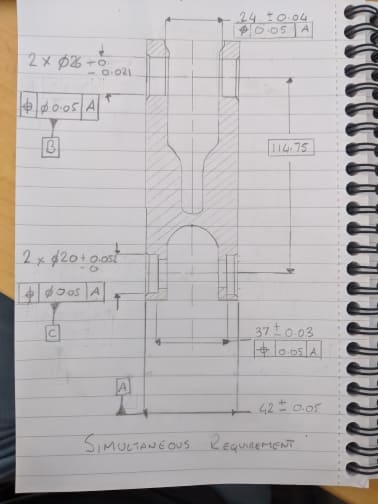Rwelch9
Mechanical
- Apr 22, 2020
- 116

Hi guys,
I have spoken on this forum before about this exact same job .
The is two sets of coaxial cylinders .
Is controlling them using simultaneous requirements as showing on my sketch correct ?
I have a design engineer who is questioning how the relationship between the two set of pockets is tolerance.
I cannot find anything on the use of simultaneous requirement exactly like this however.
I look at this as Datum A ( mid plane ) , then we will have two perpendicular axis to Datum A at a basic of 0 , 114.75 , these axis will have a tolerance zone of 0.05 .
then my 4 pockets , there axis will have to fall within this 0.05 tolerance zones ?
Any knowledge is appreciated
Thanks
